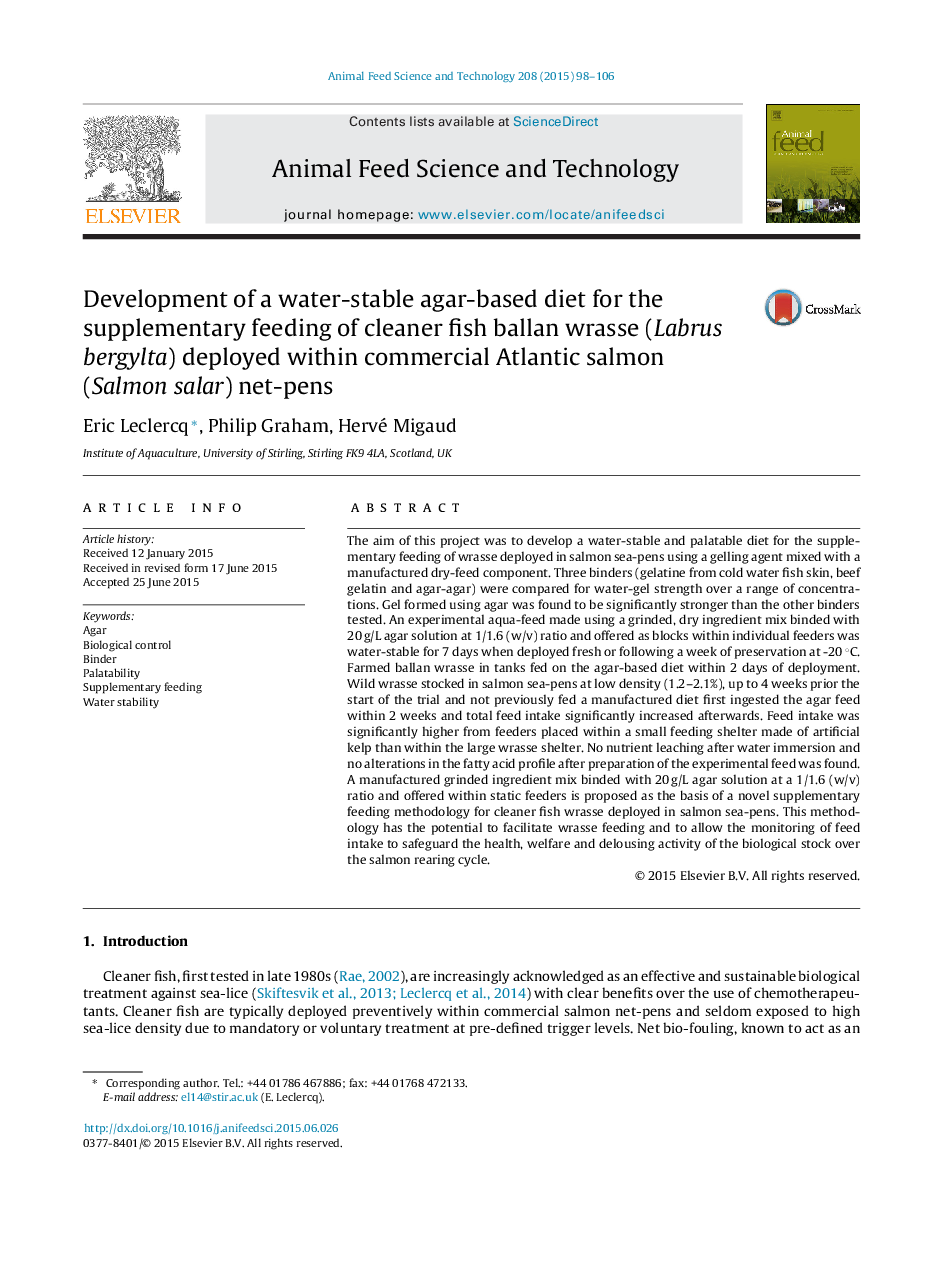| کد مقاله | کد نشریه | سال انتشار | مقاله انگلیسی | نسخه تمام متن |
|---|---|---|---|---|
| 2419490 | 1552377 | 2015 | 9 صفحه PDF | دانلود رایگان |

• An agar-based diet offered as grazing substrate for wrasse was developed
• The feed was water stable with no nutrient leaching for 1-week in seawater
• The feed was accepted in 48 h and 2 weeks by farmed and wild wrasse respectively
• The product minimises waste and gives access to a controlled feed source
• Supplementary feeding is expected to enhance wrasse survival over the salmon cycle
The aim of this project was to develop a water-stable and palatable diet for the supplementary feeding of wrasse deployed in salmon sea-pens using a gelling agent mixed with a manufactured dry-feed component. Three binders (gelatine from cold water fish skin, beef gelatin and agar-agar) were compared for water-gel strength over a range of concentrations. Gel formed using agar was found to be significantly stronger than the other binders tested. An experimental aqua-feed made using a grinded, dry ingredient mix binded with 20 g/L agar solution at 1/1.6 (w/v) ratio and offered as blocks within individual feeders was water-stable for 7 days when deployed fresh or following a week of preservation at -20 °C. Farmed ballan wrasse in tanks fed on the agar-based diet within 2 days of deployment. Wild wrasse stocked in salmon sea-pens at low density (1.2–2.1%), up to 4 weeks prior the start of the trial and not previously fed a manufactured diet first ingested the agar feed within 2 weeks and total feed intake significantly increased afterwards. Feed intake was significantly higher from feeders placed within a small feeding shelter made of artificial kelp than within the large wrasse shelter. No nutrient leaching after water immersion and no alterations in the fatty acid profile after preparation of the experimental feed was found. A manufactured grinded ingredient mix binded with 20 g/L agar solution at a 1/1.6 (w/v) ratio and offered within static feeders is proposed as the basis of a novel supplementary feeding methodology for cleaner fish wrasse deployed in salmon sea-pens. This methodology has the potential to facilitate wrasse feeding and to allow the monitoring of feed intake to safeguard the health, welfare and delousing activity of the biological stock over the salmon rearing cycle.
Journal: Animal Feed Science and Technology - Volume 208, October 2015, Pages 98–106